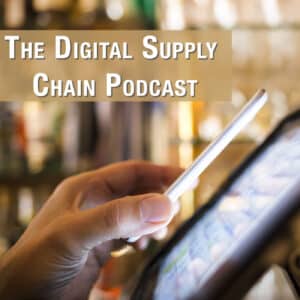“There is a fundamental difference between something being easy and something being simple.” That is the view of James Crean, president of CREAN Inc. You see while it is simple to do something that is easy, it is very challenging to make something complex simple. It is in making the complex simple where genius lies. “In my view that is the most preeminent genius of Steve Jobs. He made the iPhone, a very complex system of systems, into a product so simple to use that children with no training can use it to great effect.”
After all we rely on that iPhone to get us to important appointments, to get the latest news, to order nearly anything we can imagine through a few taps, to pay for our groceries, to send messages to individuals or millions of people at once, and occasionally we even use it to place a call to a friend. Image all the systems that all must interact flawlessly to avoid confusion or frustration. First it must communicate high data rates nearly anywhere on the planet. It must track dozens of GPS satellites in space and triangulate your location to within a couple feet. It must access databases of streets, highways, and the location of Starbucks and deliver that information in mere seconds for any place on the planet. And that is just to support the navigation application. That is one very complex system, and yet at the same time to all of those who did not have to design any of those elements or their interactions, it is just so Simple.
At CREAN we have the same focus on Simplifying the Complex. It is one reason we are so focused on implementing Smart Factory methods and technologies in our US clients and why we focus on the complex high mix production environments the most. You see, high mix production is the most complex production environment and that is where simplicity is most needed and the most difficult to deliver.
What is High Mix Manufacturing or High Mix Production? It is when a company is producing multiple different products in the same manufacturing space. Some companies have thousands of different products they are producing. Add to that they often do not have much visibility into what products will be ordered into the future, so they cannot have a firm production plan and must be flexible to handle whatever orders come in. You can see where that can become very complex to manage very quickly.
Comparing High Mix Production and Low Mix Production helps us understand the complexities. Although automobiles are complex products, they are generally built on dedicated production lines. Toyota Camary lines do not also build Tundra Trucks. It allows specialization of the machines, equipment, and people on that production line. Sure there are options and on Camary may be blue and the next one red, and this does add complexity. But imagine if every product Toyota made was produced on the same production line? Now imagine if you had to build whatever car or truck the customer happened to order online that day and still deliver it the next day? That would put a whole new pressure on the concept of rapid changeovers or as Toyota Lean Six Sigma specialists call it, SMED (Single Minute Exchange of Dies). Now imagine if every car Toyota produced could be customized with an infinite number of options and variations? In effect, what if ever car was unique from every other car previously produced?
That is our dream production environment. Massive complexity that needs to be executable by a team of highly skilled workers. Often times those skilled workers will not have more than a high school education and, at least in the US, will likely not all speak English fluently. Let’s be clear, that is not a slight in any way of those workers, because replace any one of them with the MBA in the front office and you will quickly understand how skilled and valuable they are. But too often critical “efficiency” solutions over rely on complex interactions with ERP systems that can lead to reduced rather than improved efficiency. What we focus on are solutions that deliver simplicity at all levels of the organization which creates the opportunity for them to maximize their productivity through complexity simplification.
The key to success is not to implement a Complex Smart Factory but rather a Simple Smart Factory that integrates all the complex systems of systems that make up a modern production environment but delivers a simple to each person who interacts with it, be that the factory operator or the general manager.
Make no mistake, that Simplicity is not needed just for the workers, it is needed even more for that managers making a myriad of decisions to run that factory. They need to have digitally enabled decision support tools that deliver real-time information (to their iPhones) that uses analytics to deliver insights that permit them to implement the flexibility needed not just in that factory, but also throughout the supply chain.
The companies of today and the future that can execute in this complex environment efficiently and effectively are game changing companies. Can your company do this today? How long before it can? Are your competitors ahead of you in accomplishing this? If you lose that race will you be able to remain in business?
Whether you are operating a factory or operating a constellation of communications satellites, simplicity in the interaction between the people, the process, and the technology will be a critical success factor.
According to a recent McKinsey study only 8% of companies believe they will be in continue to be viable if their competitors continue to digitize at the rate they currently are. If you are in the 8% congratulations. If you are in the other 92%, let us help you be in the 8%.
CREAN Inc. Complexity Simplified ™



